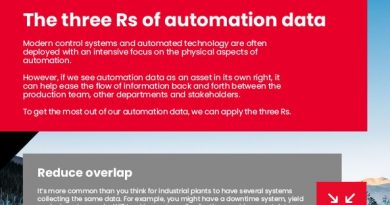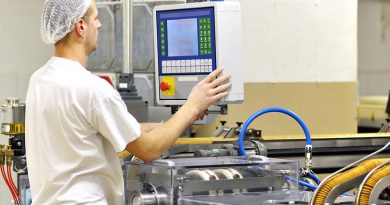Are your systems aligned with your aims?
If you want to run a marathon, you probably wouldn’t train for it by practising your somersaults. Equally, if you want to reduce costs in your food plant, employing a system with multiple data points and new sensors is not necessarily going to have the effect you desire. Here, George Walker, managing director of Novotek UK and Ireland, explores the two types of plant managers and how best to achieve their goals.
There are two types of food plant managers. There is the innovator, who is looking for new ways to achieve goals and improve systems, and the cost-conscious individual, who is looking for leaner and cost-effective solutions. Depending on your goal and the category you fall into, your systems and software should be specified and procured with that objective in mind.
Aligning your systems with your goals and aims for the business is the first step in this process. Being honest and realistic with these aims is vital, as without a clear view of what you want to achieve in your food plant, there is going to be disappointment, costly mistakes and confusion along the way.
There is no one-size-fits-all approach to industrial automation, so systems will vary depending on the automation profile of the business. But what systems will benefit each type of food plant manager?
The Innovator
When thinking about innovation, one of the key components is data. With data comes the opportunity to view where improvements, changes and adaptations can be made. Data sources such as control systems and sensors are at the heart of the plant, and will grant access to the information that will change the game altogether.
Implementing these systems is relatively simple but, of course, you must have the necessary equipment to collect and record this data. To start with, you should at least have a SCADA system in place, connected to show an overview of system performance.
To facilitate greater innovation, you can look at installing an MES system, which gives more access and accountability to the humans in control of the systems. From a plant-wide overview through to granular production activity, the system collects data from sensors and industrial control systems and displays it in a ready to view state.
Insight is the key to innovation and that is what these systems offer. So, if you’re looking to change the world of food plants, there’s some food for thought to get you started.
The cost-conscious
When cost is top of the agenda, the systems and software you will look to are different to that of the innovator.
Instead of the wild and wonderful additions of new technologies, the key here is making the most of what is already on site. Optimising asset performance is relatively easy if you look towards an Internet of Things connected platform, such as GE Digital’s Predix platform. This kind of system can predict problems and outages before they occur and connect the factory to the wider logistics chain.
This software uses machine learning to detect normal behaviour and data sets. Automation can detect issues far quicker than a human worker, and can cross reference historical data to see if it is a recurring issue. Employing this kind of intelligence facilitates predictive maintenance to prevent future issues.
Considering your business goals is crucial when looking to improve systems and infrastructure. With so many different solutions to achieve different goals, it is impossible to think that there is one solution that could be rolled out across multiple plants.



